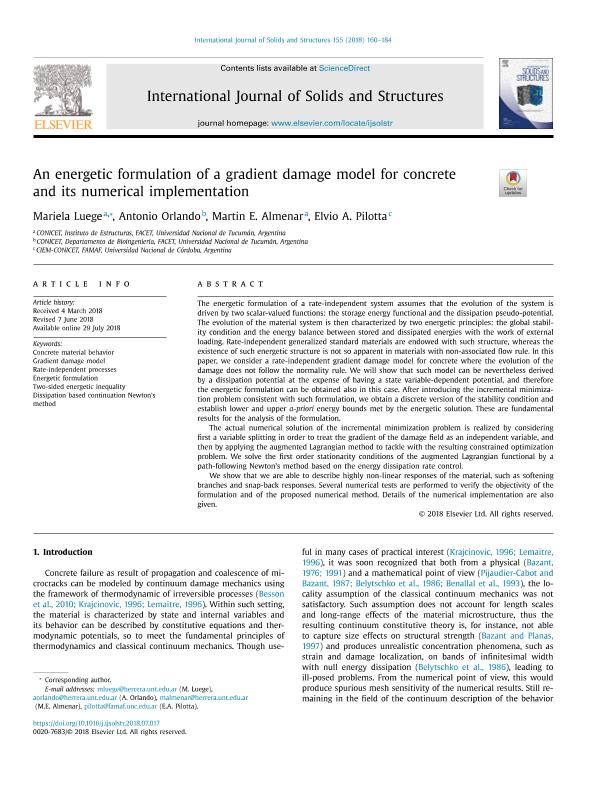Artículo
An energetic formulation of a gradient damage model for concrete and its numerical implementation
Fecha de publicación:
12/2018
Editorial:
Pergamon-Elsevier Science Ltd
Revista:
International Journal Of Solids And Structures
ISSN:
0020-7683
Idioma:
Inglés
Tipo de recurso:
Artículo publicado
Clasificación temática:
Resumen
The energetic formulation of a rate-independent system assumes that the evolution of the system is driven by two scalar-valued functions: the storage energy functional and the dissipation pseudo-potential. The evolution of the material system is then characterized by two energetic principles: the global stability condition and the energy balance between stored and dissipated energies with the work of external loading. Rate-independent generalized standard materials are endowed with such structure, whereas the existence of such energetic structure is not so apparent in materials with non-associated flow rule. In this paper, we consider a rate-independent gradient damage model for concrete where the evolution of the damage does not follow the normality rule. We will show that such model can be nevertheless derived by a dissipation potential at the expense of having a state variable-dependent potential, and therefore the energetic formulation can be obtained also in this case. After introducing the incremental minimization problem consistent with such formulation, we obtain a discrete version of the stability condition and establish lower and upper a-priori energy bounds met by the energetic solution. These are fundamental results for the analysis of the formulation. The actual numerical solution of the incremental minimization problem is realized by considering first a variable splitting in order to treat the gradient of the damage field as an independent variable, and then by applying the augmented Lagrangian method to tackle with the resulting constrained optimization problem. We solve the first order stationarity conditions of the augmented Lagrangian functional by a path-following Newton's method based on the energy dissipation rate control. We show that we are able to describe highly non-linear responses of the material, such as softening branches and snap-back responses. Several numerical tests are performed to verify the objectivity of the formulation and of the proposed numerical method. Details of the numerical implementation are also given.
Archivos asociados
Licencia
Identificadores
Colecciones
Articulos(CCT - NOA SUR)
Articulos de CTRO.CIENTIFICO TECNOL.CONICET - NOA SUR
Articulos de CTRO.CIENTIFICO TECNOL.CONICET - NOA SUR
Articulos(CIEM)
Articulos de CENT.INV.Y ESTUDIOS DE MATEMATICA DE CORDOBA(P)
Articulos de CENT.INV.Y ESTUDIOS DE MATEMATICA DE CORDOBA(P)
Citación
Luege, Mariela; Orlando, Antonio; Almenar, Martín Ernesto; Pilotta, Elvio Angel; An energetic formulation of a gradient damage model for concrete and its numerical implementation; Pergamon-Elsevier Science Ltd; International Journal Of Solids And Structures; 155; 12-2018; 160-184
Compartir
Altmétricas




